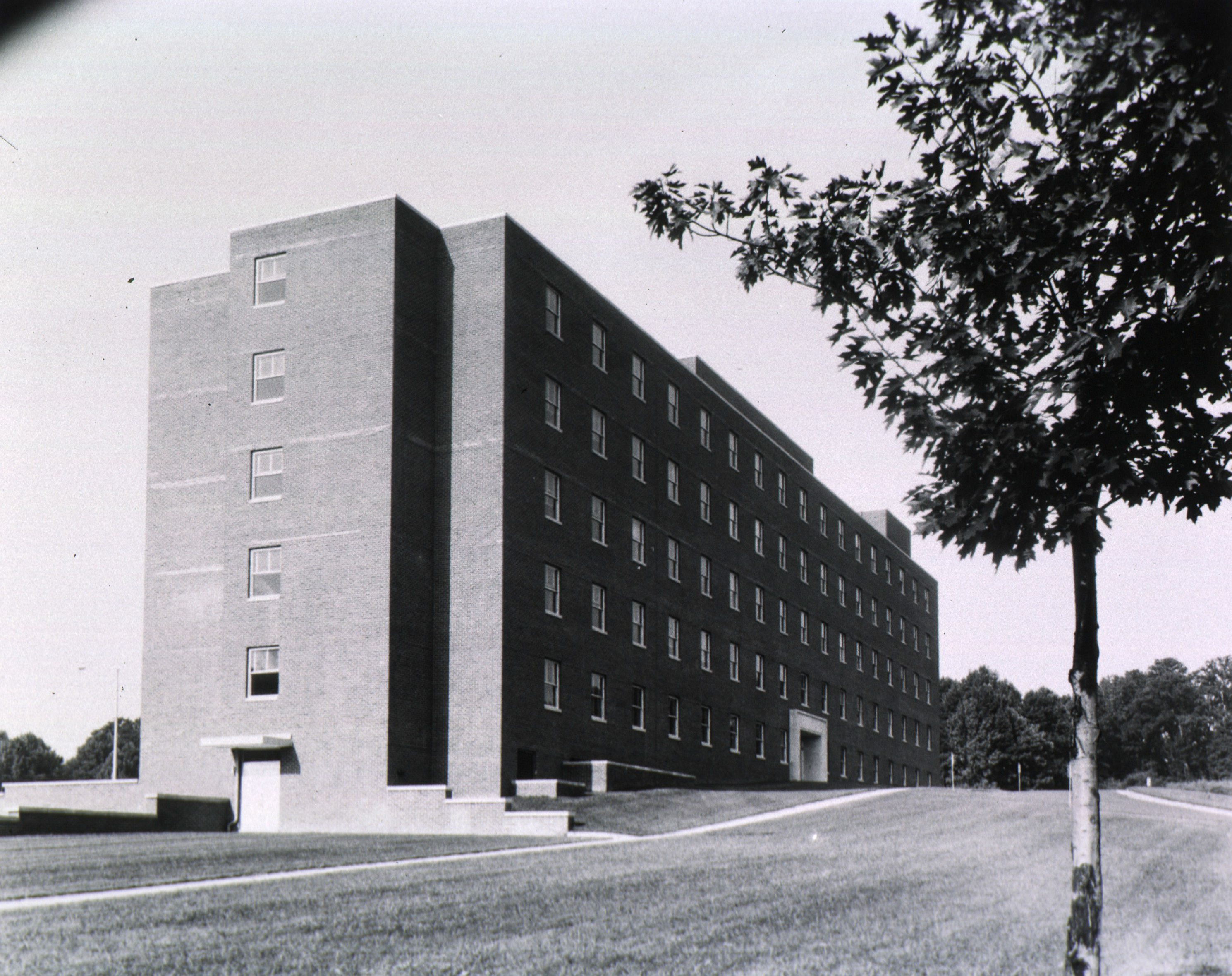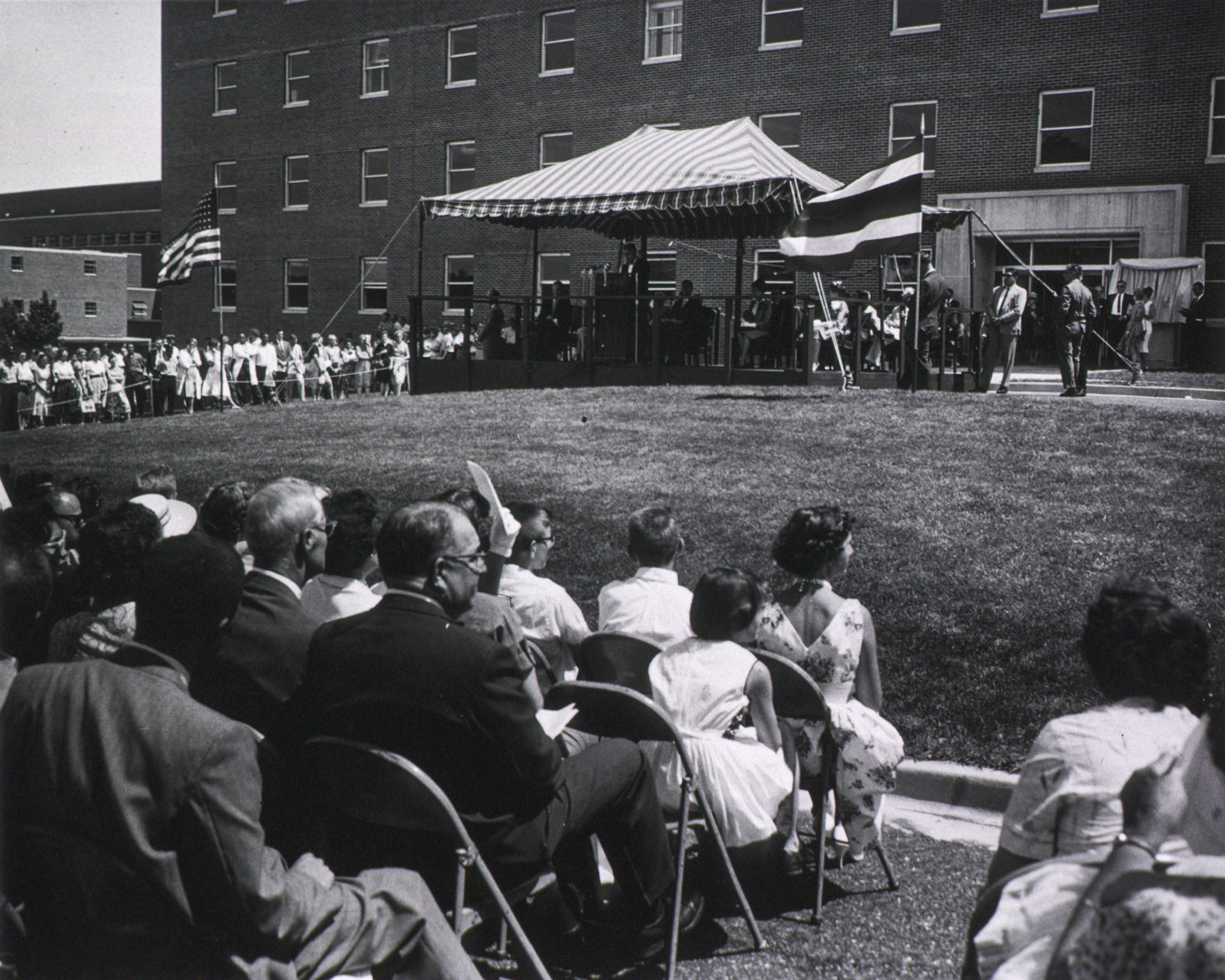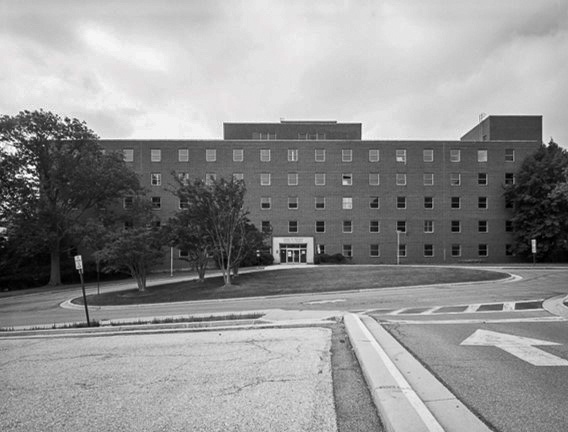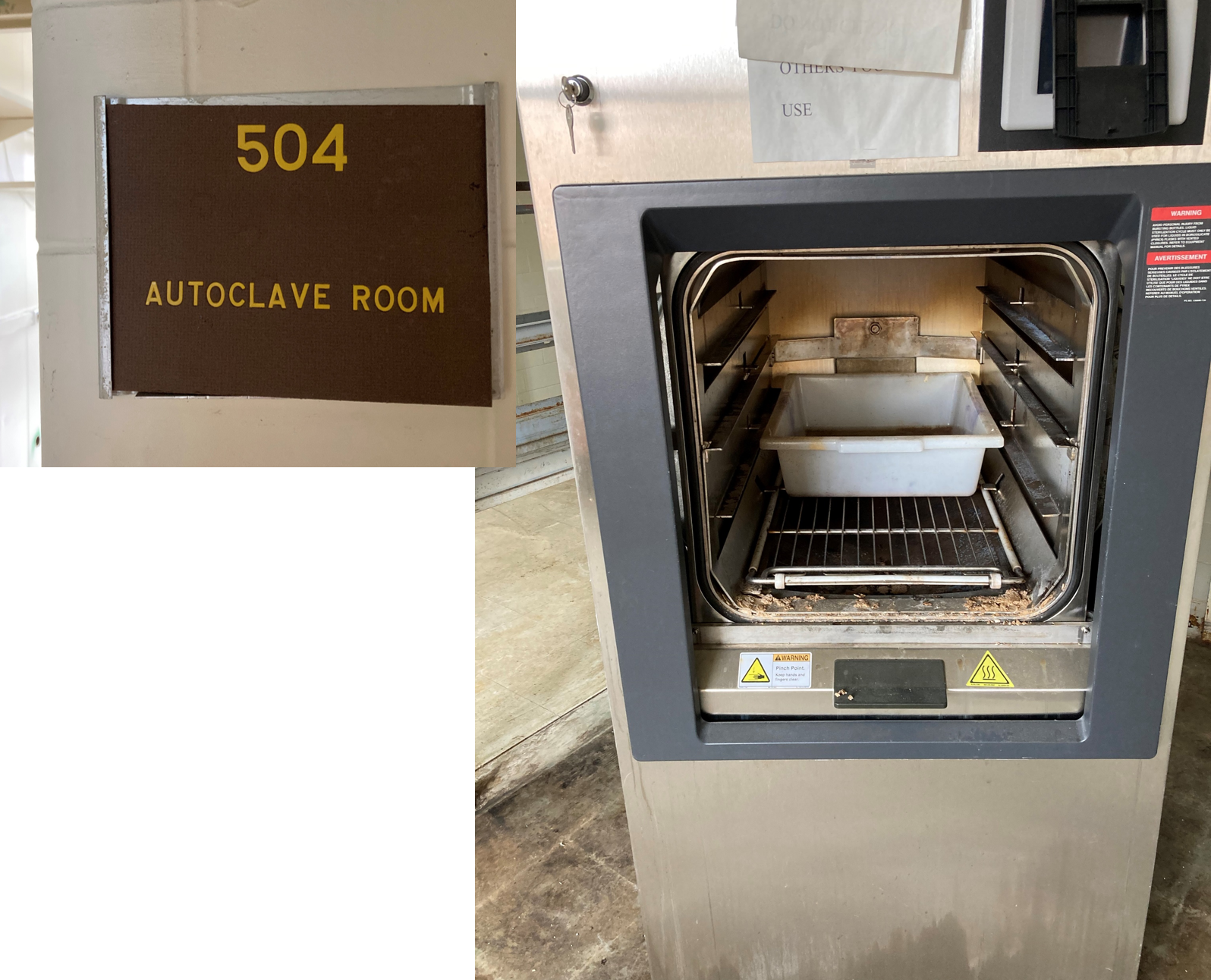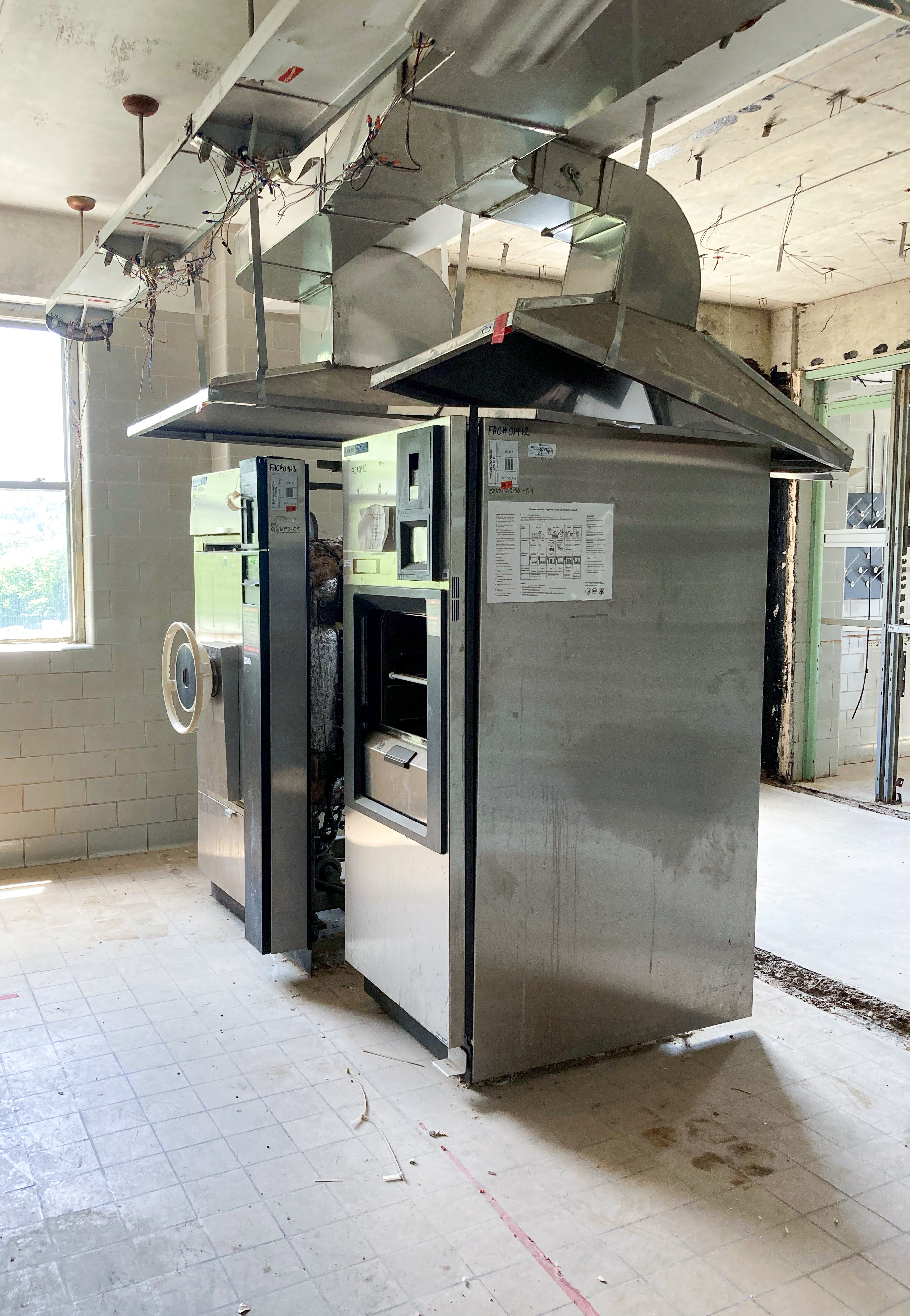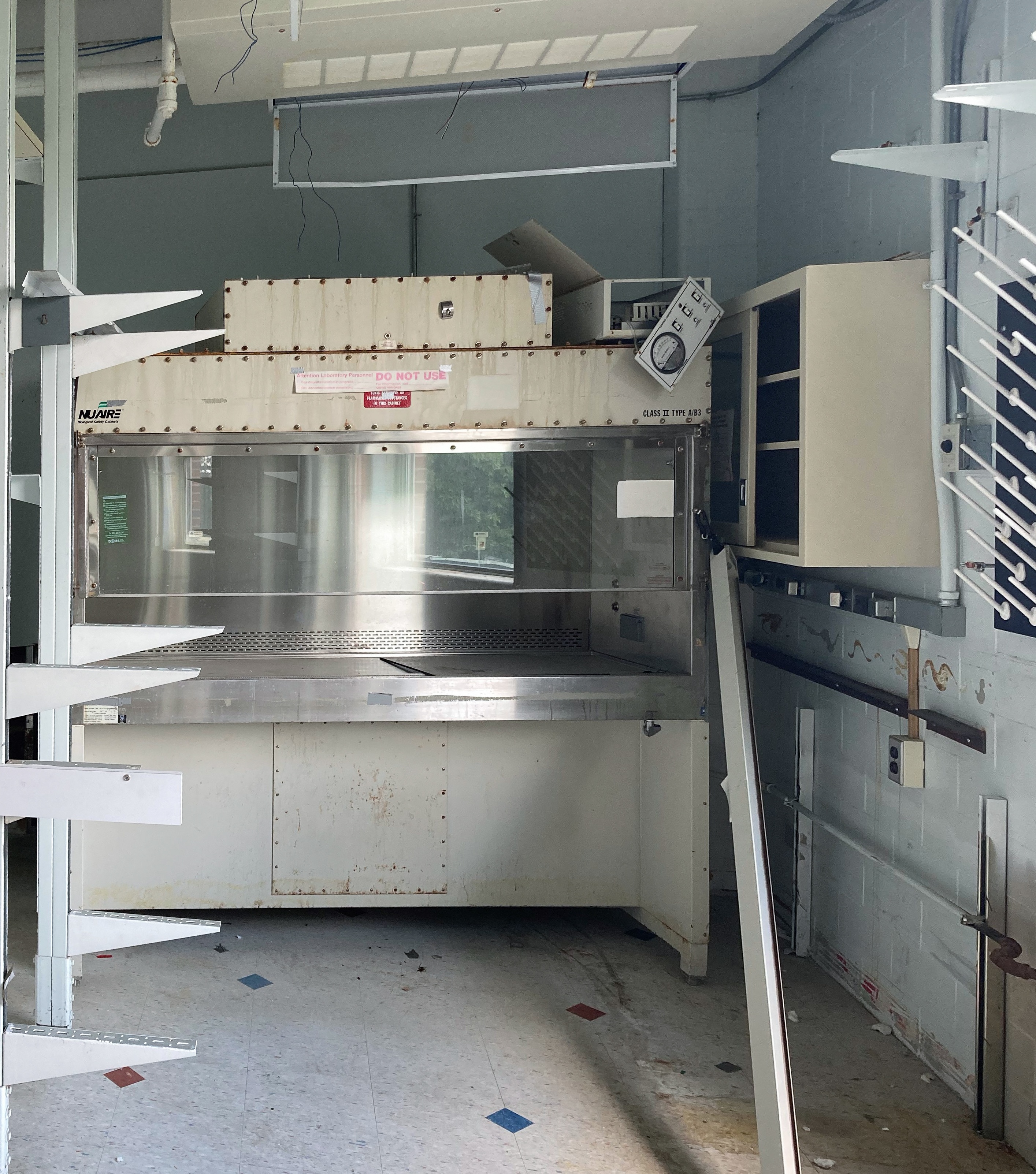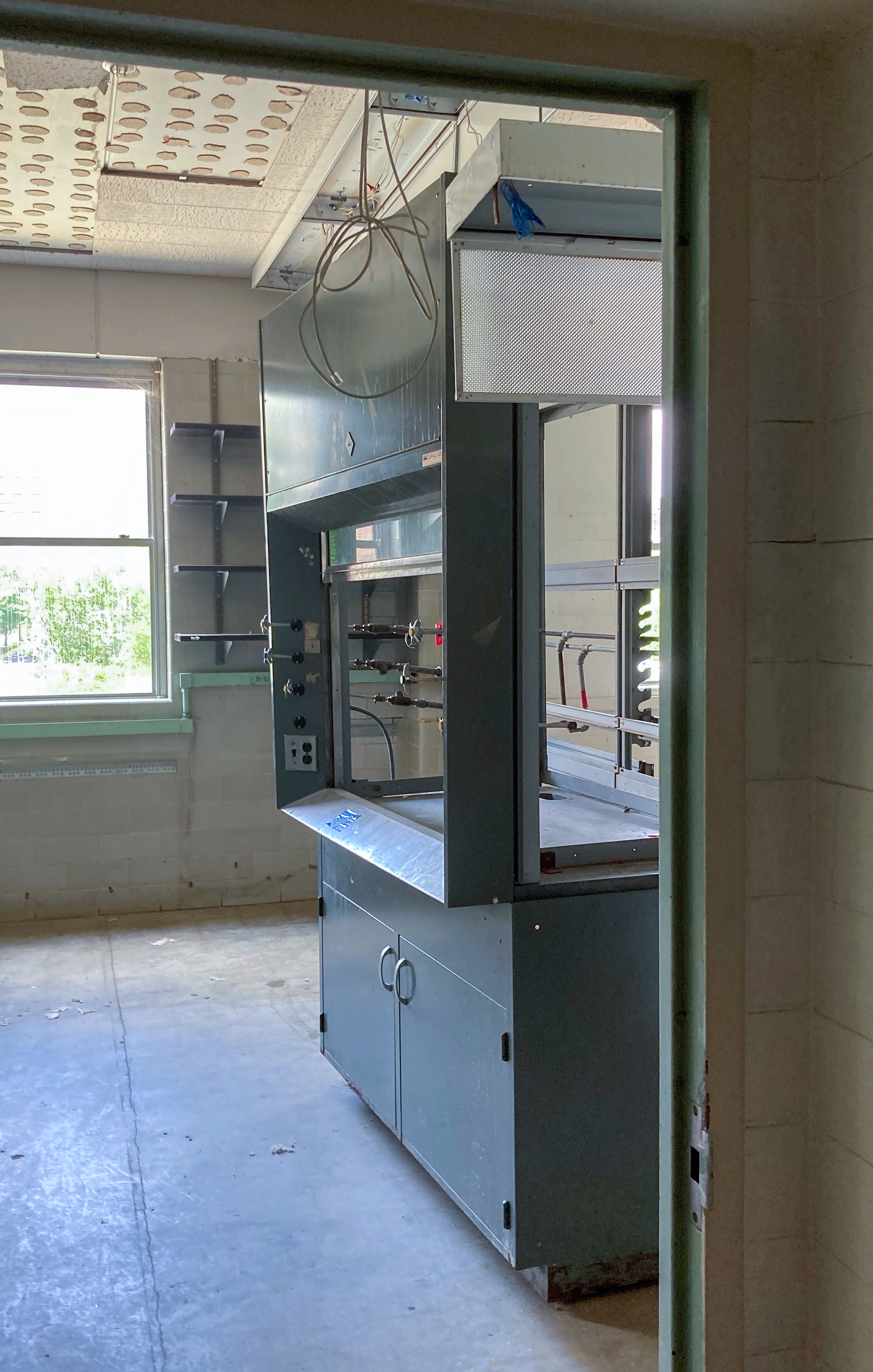Building 29
This is one version of the Building page for the online exhibition. In this case, the building functions as an image map and links to other pages. So far, three links have been made for Building 29. One is to a sub-page on the building’s dedication ceremony, one is to the Rubella disease/vaccine page, and one is to the Laboratory of Bacterial Products page. There would also be links to construction information, additional floor plans, and other laboratories and biographies pages.
Lorem ipsum dolor sit amet, consectetur adipiscing elit. Aliquam fermentum vestibulum est. Cras rhoncus. Pellentesque habitant morbi tristique senectus et netus et malesuada fames ac turpis egestas. Sed quis tortor. Donec non ipsum. Mauris condimentum, odio nec porta tristique, ante neque malesuada massa, in dignissim eros velit at tellus. Donec et risus in ligula eleifend consectetur. Donec volutpat eleifend augue. Integer gravida sodales leo. Nunc vehicula neque ac erat. Vivamus non nisl. Fusce ac magna. Suspendisse euismod libero eget mauris.
Ut ligula. Maecenas consequat. Aliquam placerat. Cum sociis natoque penatibus et magnis dis parturient montes, nascetur ridiculus mus. Nulla convallis. Ut quis tortor. Vestibulum a lectus at diam fermentum vehicula. Mauris sed turpis a nisl ultricies facilisis. Fusce ornare, mi vitae hendrerit eleifend, augue erat cursus nunc, a aliquam elit leo sed est. Donec eget sapien sit amet eros vehicula mollis. In sollicitudin libero in felis. Phasellus metus sem, pulvinar in, porta nec, faucibus in, ipsum. Nam a tellus. Aliquam erat volutpat.
Dedication Ceremony:
- The Division of Biologics Standards (DBS) celebrated its Fifth Anniversary on June 30, 1960, with the dedication of its new home, Building 29. The building was not ready for occupancy, but the first floor was open for visitors to see after the ceremony.
- The King and Queen of Thailand, Their Majesties King Bhumibol Adulyadej and Queen Sirikit, were invited to attend and His Majesty officially dedicated the building because of his active role in the South East Asia Treaty Organization (SEATO) Cholera Research Project.
- Roderick Murray, Director of DBS, gave the principal speech during the ceremony.
- The Surgeon General, Dr. Leroy E. Burney, and the Secretary of the Department of Health, Education, and Welfare, Arthur Flemming, were also in attendance.
- The ceremony was held in the afternoon on lawn on the north side of Building 29, after a luncheon held at the Stone House.
- The new building would bring together more than 190 staff who were previously working in at least 5 different buildings on the NIH campus.
Photograph from the Building 29 Dedication Ceremony
Construction:
- Building 29, the NIH Division of Biologics Standards (DBS) Laboratory, is nationally significant to the history of medicine and public health because within the laboratories of Building 29, scientific investigators conquered some of the deadliest infectious diseases that scourged America and the world. Some of the most well-known scientists and administrators of the twentieth century worked in this building, first for the NIH and then for the Food and Drug Administration (FDA).
- Building 29 was purpose-built in 1960 to house the newly established Division of Biologics Standards, which had been formed in 1955 as the continuation of a biologics regulatory function that had existed in what is now the NIH since 1902. President Dwight D. Eisenhower was in office when funding for the new building was made available for the DBS.
- Building 29 was designed to be functional and safe for the Division of Biologics Standards. The building does not have much exterior ornament and does not contain the Georgian Revival style features that are present on the historic core of the NIH campus. Compared to construction drawings, the floor plan of Building 29 has not changed much since it opened in 1960. When the building was vacated in 2014, most of the laboratory equipment was removed. Asbestos abatement has led to partial demolition in some areas, but the exterior of the building remains intact, and some interior spaces do as well, conveying the significance of the laboratory space.
- Architect: Ted Englehardt, AIA (Silver Spring, MD)
- Builder, contractor, suppliers: The Norair Engineering Corporation constructed the building and Public Building Services of the General Services Administration (GSA) administered the contracts. John A. Cofrancesco, Research Facilities Planning Branch, DRS, was the NIH project engineer.
The north side of Building 29
Building 29, Room 504 Autoclave room
Autoclaves in building 29
Building 29, Room 429 Fume Hood
Building 29, Room 218 Fume Hood
Drawing here? Drawing Credit: NIH Office of Research Facilities 1957.
Bibliography:
National Library of Medicine. Digital Collection. “Dedication ceremony of Building 29.” Image ID: A014600. Bethesda, MD: National Institutes of Health. Accessed September 21, 2021. http://resource.nlm.nih.gov/101440943.
National Library of Medicine. Digital Collection. “Dedication ceremony of Building 29.” Image ID: B010231. Bethesda, MD: National Institutes of Health. Accessed September 21, 2021. http://resource.nlm.nih.gov/101440944.
Stabler, E.K., editor. “King of Thailand to Dedicate DBS Building on June 30.” The NIH Record, Volume XII, Issue No. 13, June 21, 1960. Bethesda, MD: National Institutes of Health, 1960. Accessed September 21, 2021. https://nihrecord.nih.gov/sites/recordNIH/files/pdf/1960/NIH-Record-1960-06-21.pdf.
Washington Post. “Royal Pair’s Schedule Here.” June 29, 1960.


